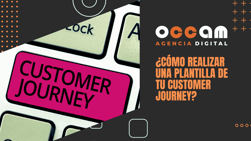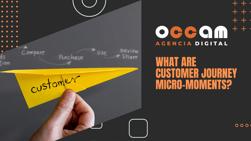Index Content
Perhaps, we are at the perfect time to remember that the ways of selling have changed. And they have done so because of the profound evolutionary change that the ways of buying have undergone. We must understand, as well as remember, that today's buyers are no longer those of ten years ago. Not even those of yesterday. They are no longer interested in or need to be overwhelmed with advertising about the products and services offered by companies, as it is an action that generates the opposite result to the expected one: fleeing.
have you ever heard that the more people tell us to do something, the less we do it? Well, that is exactly what happens with traditional marketing, as intrusive methods stopped working a long time ago.
Here's what it's all about.
The Internet, the origin of everything
I once heard it said that language was a culture that limited the possibilities. However, today I firmly believe that it broadens them, as there are no barriers to the creation of new expressions and new words, and even less so considering that we are immersed in the Information Age. Inbound Marketing arises and all the concepts from its methodology emerge. The Internet has opened up a world of possibilities, so much so that we could say that it has been the origin of the Inbound methodology.
Every revolution has a history, and that of Inbound Marketing is no different. In this case, some experts agree in pointing out two origins: the term and the market logic. Firstly, as we have already mentioned, it was Dharmesh Shah and Brian Halligan, co-founders of HubSpot, who created the term Inbound Marketing. They were looking for greater agility, integration and ease in their actions and tools. They found numerous limitations to which they sought a solution.
The arrival and consolidation of the Internet and new information and communication technologies have marked a significant change in the daily life of any citizen. The Internet has changed purchasing trends, as companies are no longer the only ones to explain services to us, but there are an infinite number of publications about them on the Internet. When we are going to make a purchase, we consult different pages, analyse, observe and reflect. In the end, you will choose the one that best suits your problems and needs.
choose one in a million!
The buyer's journey becomes important
We told you about the origin of Inbound Marketing anchored in the Internet to introduce you to the world of this methodology. The buyer's journey has become a process of active search and information that people carry out before buying a product or contracting a service. Buying and selling are actions that we carry out throughout our lives, but now we have the possibility of following their journey.
We talk about three stages: discovery, consideration and decision. We know that every buying process begins when a person wants to name and shape a problem or need that he is not yet able to identify correctly. He is aware that he has a problem, but he does not really know what it is. Educational content, aimed at this first stage, is the key to help him identify it. Then, users become aware of the problem they have, they have identified it, but they still do not know what the solution might be or, if they do know it, they want to know which is the best one.
Finally, after having evaluated all the options, the sales opportunities decide to take the step and buy a product. We are in the last phase of the buyer's journey. At this point, many companies establish the end point, forgetting one of the most important steps: loyalty.
what stage do you think your potential customers are in?
do you want to know our conclusion?
Inbound Marketing has brought with it a series of techniques that, combined, make it possible to attract potential customers. Its origins are closely related to the Internet, as the possibilities and capabilities it allows are unimaginable. Within this process, the buyer's journey is the route they take, so it is important for companies to know what stage each of them is at and to adapt the content we want to offer them.
Thinking about them is thinking about you.





